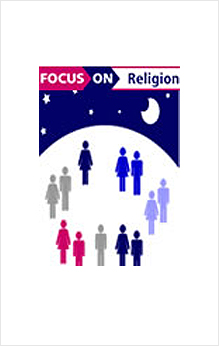
Publisher: The Office for National Statistics
Release Date: October 2004
Author: ONS
Source: No longer available on the website
The introduction of a religion question in the 2001 Census was an historical event. The last time such a question appeared in a Census in England was a hundred and fifty years ago. The question in the 2001 Census was a voluntary one, asking ‘What is your religion?’, with 8 tick boxes – None, Christian (including Church of England, Catholic, Protestant and all other Christian denominations), Buddhist, Hindu, Jewish, Muslim, Sikh, Any other (with a write-in box). Wisely, the question did not seek to explore issues of religious practice, but solely religious affiliation.
The inclusion of the question was the result of a persistent and sustained campaign that began informally in the build-up to the 1991 Census but only took institutional form in the mid-1990s. The campaign was spearheaded by an interfaith network chaired by Professor Leslie Francis, in which the Muslim community, initially through the UK Action Committee for Islamic Affairs (UKACIA) and subsequently the Muslim Council of Britain, played a key role. It not only had to overcome institutional resistance within the civil service, long-used to treating ‘minority’ concerns through the lens of ethnic classifications, but also alter a cultural reflex that wished to keep religion in the private domain without a say in public policy decision-making. The Muslim position was that ethnic categorization on its own was not sufficient basis for equitable public service delivery or resource allocation. Moreover, Muslims themselves felt far more comfortable with a self-description based on their faith.
The first results on religion from the Census were published in February 2003. This was mainly ‘headline’ statistics in terms of overall numbers and age and gender breakdown. Since then, further tables have been released providing Muslim population breakdowns to lower level geographic boundaries: local authority district, ward and census output area. A limited number of cross-tabulations have also been available, for example by ethnic groups, housing tenure, educational attainment etc. The ‘Focus on Religion’ report prepared by Amanda White and her colleagues in the Ethnicity & Identity Branch of the Office for National Statistics now consolidates and summarises the census findings on this issue.
The report confirms the problems of poverty and deprivation facing Muslims in Britain – hitherto unquantifiable because the community has been ‘statistically invisible’.
On the positive side it shows that Muslims are making a massive social contribution in preserving and upholding the institution of the family: young Muslim adults are more likely to be married (22% compared to 8% Hindus, 6% Sikhs and 3% of Christians) and Muslim households are more likely to contain children – 63% contained at least one dependent child, compared with 25% Jewish and 27% Christian households. The report notes that “lone parent households are less common within Muslim, Hindu, Sikh or Jewish communities”.
The report confirms the problem of educational attainment facing Muslims – an issue that needs to be addressed through self-help initiatives by the community itself and not through public sector interventions alone. However, fresh statistics also highlight the glaring disparity in state-maintained faith schools. Much smaller communities receive facilities an order of magnitude greater: “there were 371,000 school-aged (5 to 16 year old) Muslim children in England in 2001 and four Muslim state-maintained schools in 2003, catering for 1000 children…there were 33,000 Jewish school-aged children in England compared with 13,000 places in state-maintained Jewish schools”. With such statistics in the public domain, it is possible to make a more cogent case for a level playing field and the recognition of more Muslim state-maintained schools.
The report also provides important data on health and disability, housing, labour market and employment patterns. The ONS is to be commended for the preparation of this land-mark report that is essential reading for service providers in local government and advocacy bodies in the community. The ONS, ever keen on cost-effectiveness, has released this as an on-line rather than paper report. The real savings will of course arise when its findings are taken on board by policy makers to achieve more optimal and efficient deployment of resources.
M. A. Sherif, 2005
